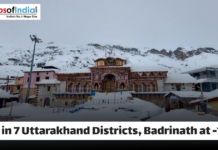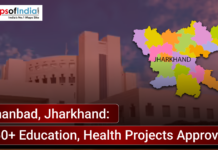There has been a new environmental issue in Gujarat where salinity has been experienced to cover 37 per cent of the land in nine coastal talukas, where it poses a threat to agriculture, drinking water resources, and the livelihoods of thousands of families. The increasing salinity, especially due to the intrusion of seawaters, is turning out to be among the most critical problems for the coastal areas of the state.
Experts indicate that salinity ingress has been caused mainly due to over-exploitation of groundwater in the coastal regions, which decreases the natural pressure of the fresh water aquifers. This enables seawater to trickle into the interior, thereby polluting underground water bodies and making the soil unproductive. The distribution has, over the years, increased with the previous farmland becoming barren over time.
In the areas that are affected, farmers are recording poor crop yields and a reduction in choices to grow. Standard crops such as groundnut, cotton and wheat are not able to survive in salty waters, and people have to turn to resistant ones or more unprofitable crops. This financial pressure has caused increasing distress, and in other instances, rural families have migrated to urban centres in search of means of livelihood.
This has also affected the availability of drinking water, whereby the village wells and the hand pumps are becoming increasingly saline. According to the locals, the flavour of water has altered drastically, and health problems associated with large salinity levels are starting to appear.
The Gujarat government has realized the issue and is conducting the projects under the Salinity Ingress Prevention program. Strategies like the construction of check dams and recharge wells, and pipelines that convey Narmada to the coastal villages have been done to fight the problem. Although such efforts have been successful in certain areas, the fact that salinity has been spreading to 37 per cent of land shows that a lot more should be done.
Environmentalists are demanding a long-term holistic approach, such as tightening the use of groundwater, massive use of drip irrigation and massive afforestation to form natural aqueducts to prevent seawater intrusion. They also posit that the development of skills should be enhanced and alternative employment should be created so that the farmers do not have to rely on the dwindling agricultural earnings.
As salinity slowly infiltrates the mainland, the crisis highlights how the ecological changes affect the coastal belt of Gujarat. The damage may be irreversible unless immediate measures are taken, exposing food security and livelihoods in the rural areas to more danger.
The experience of the coastal talukas of Rajkot is a sobering confirmation that there is no longer any need to weigh development against ecological sustainability, but rather it is a necessity for the future of the Gujarat coastal communities.










